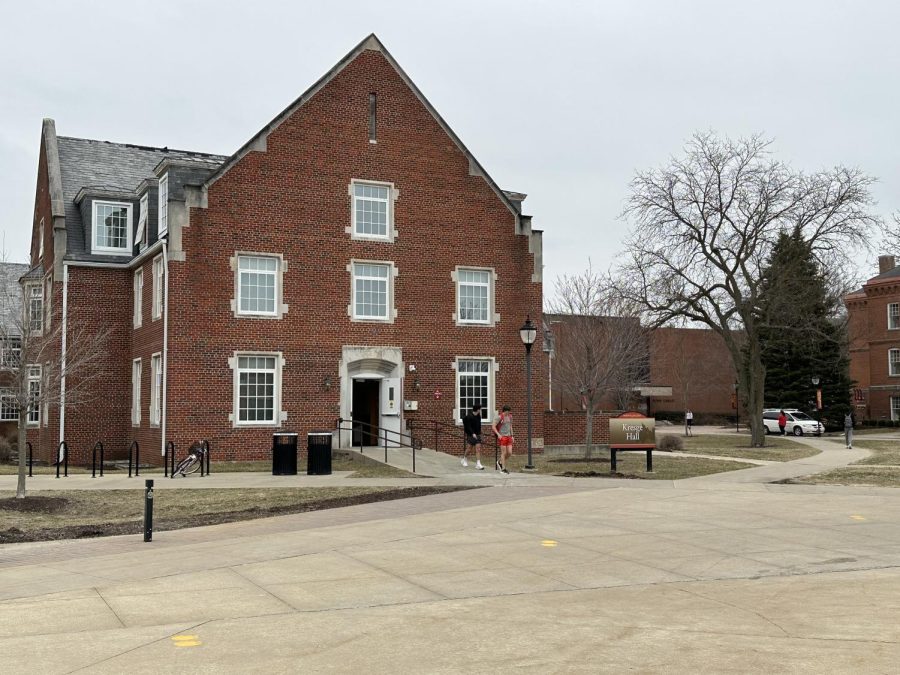Our View
February 6, 2013
Before we begin, let us remind you: this editorial is not meant to make anyone nervous. We have no reason to believe Simpson College has received any bomb or gun threats. Simpson Security and the Indianola Police department do a wonderful job keeping our campus and community safe. But in light of recent events, when high schools, office buildings and tragically, an elementary school in Conn. must deal with the aftermath of violence in their halls, it is important for colleges and their students to be aware of emergency policies and strategies ahead of time to stay safe and be prepared.
Students have a personal responsibility to be aware of Simpson’s security plans in case of an emergency. In the event of a critical emergency on campus, Simpson College has ‘Stay-in-Place’ guidelines for both campus housing and non-residence hall locations. A few reminders for students from the guidelines:
If there is NOT a fire, do not trigger the fire alarm. People’s natural reactions to fire alarms are to leave the building. If there is a threat on campus that has not yet been contained, this can put others at a serious risk.
If at all possible, lock yourself in a secure room or apartment and stay put. Close the blinds, turn off lights and AC or audio equipment and put your cell phone on vibrate. Don’t use it unless you need to get in contact with emergency personnel.
Stay away from doors and windows. Lie down flat on the ground if you have to.
Stay quiet and wait for the all-clear from emergency personnel. Stay where you are until you are told by emergency workers to come out.
If you are outside and cannot safely make it to a building, use obstacles like bushes, cars, walls, etc. for cover. If you need to run, don’t run in a straight line, and try to keep obstacles in between yourself and the source of the threat.
When police or other emergency personnel arrive, follow all commands, even if you are asked to put your hands in the air or are handcuffed. Emergency worker’s first concern is making sure everyone is safe. Once that is established, they will give further instructions.
The ‘Emergency Preparedness’ plan Simpson has on its website is well thought out; however, it needs to be updated.
In the plan, a few professors are named as the first to be contacted in order to begin a phone tree. This is a great idea; however, the plan does not include anyone from the Gaumer Center, home of the art and communication departments. Some of these names in the plan are also out of date, and this will become an even larger problem once President Simmons arrives at Simpson.
Second, the plan mentions Brenton Student Center [BSC] numerous times. While we believe most would understand that the BSC is now the Kent Campus Center, give it five years. Once all of us are gone, this could pose an even greater issue.
Also, Simpson has established a plan to notify students, faculty and staff by means of the SAFE system. This program sends texts, automated calls and emails to subscribers. Messages can be easily sent to members of the Simpson community; however, some students have found that the reception isn’t the best in the residence halls, making it difficult to receive these messages in a time sensitive manner.
Finally, the plan says that the command post for the members of the President’s Crisis Committee will be the Simpsonian Lab. In its original location, we can see why this would be a prime place to set up camp in an emergency situation. It is out of the way and often unnoticed, but does this location change to the new Simpsonian Lab or does it remain the old room? If the plan is to meet in the new Simpsonian Lab, this is not a great plan as we will be busy getting information out to the students. By overtaking our space, that committee will be putting our communication lines with the public in jeopardy.
Not only do these changes need to be made, but also the plan itself needs to be easier to locate and more accessible for the members of the Simpson community.
Let’s face it, students of Simpson College; did you even know we had a detailed plan for situations such as fire, tornadoes, bomb threats, gunmen, etc.?
Students are unaware of these practices, and that fact alone does nothing to aid in their overall safety.
Simpson College, as much as we hate to think about it, we need to be prepared in case a situation happens to arise.
In order to better prepare yourself, read up on this information. Read more about Simpson College’s Stay-in-Place Guidelines on our website, www.thesimpsonian.com, and go to www.simpson.edu/human-resources/emergency-preparedness. Watch our website, Twitter feed and Facebook page for continuous updates during any sort of emergency.





